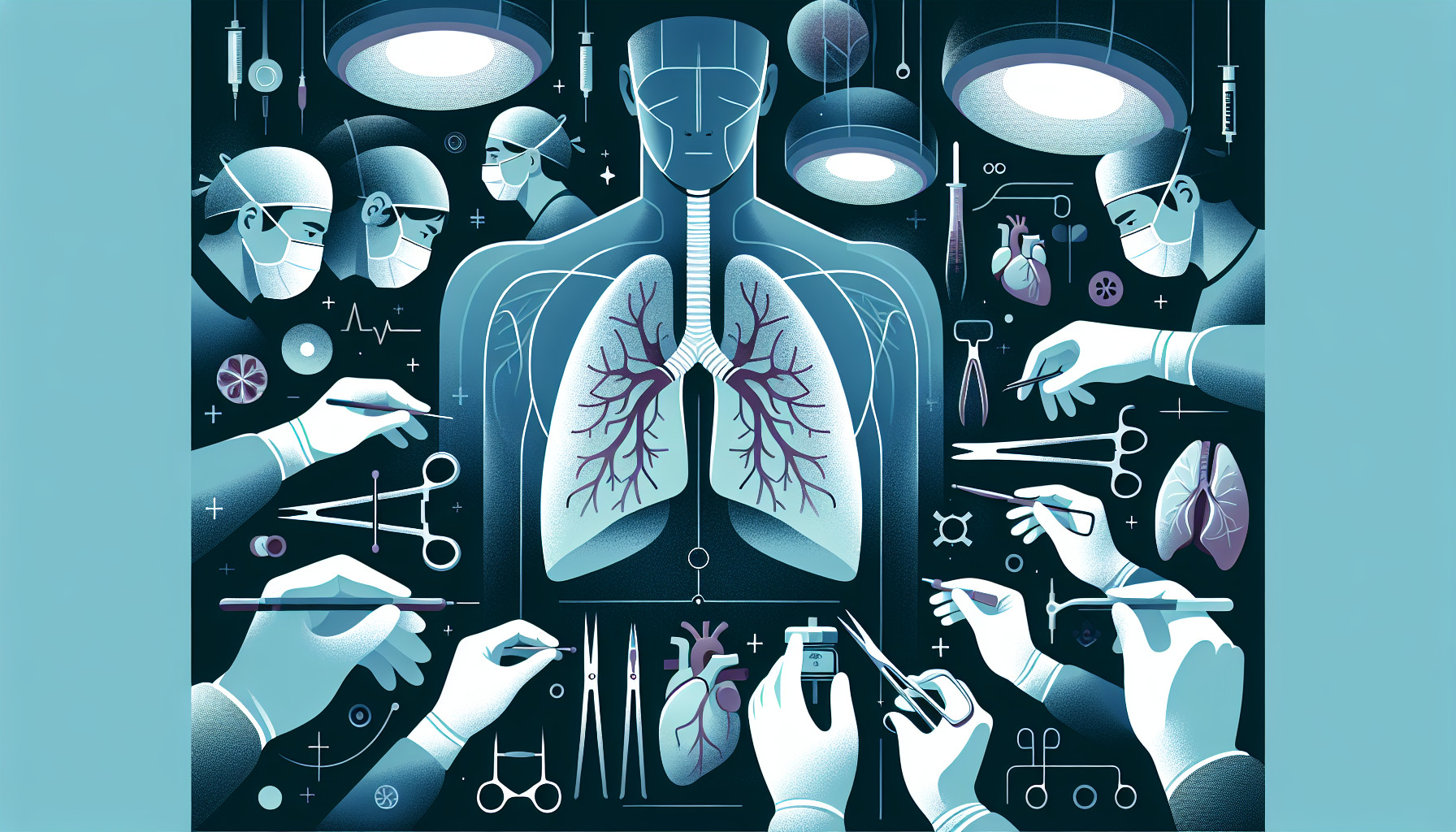Our Summary
This research paper discusses the use of a technique called ECMO bridging in lung transplants. ECMO, or extracorporeal membrane oxygenation, is a treatment that uses a machine to take over the work of the lungs and sometimes the heart. This technique is used increasingly in lung transplants due to changes in how donor lungs are allocated to patients.
The paper highlights that choosing the right patients for this technique is critical for successful transplantation. It suggests that patient assessment before the transplant is essential, and the strategy used should be decided based on the patient’s specific circumstances.
However, there are some challenges. For instance, complications like bleeding and clotting often happen during the ECMO process. Moreover, there is currently no ideal method to prevent blood clotting during this procedure. Additionally, the system used to predict outcomes after the ECMO bridging process has some limitations.
The research concludes that ECMO bridging for lung transplantation is suitable for patients who are waiting for a lung transplant when other breathing support methods are not effective or when the patient’s condition is severe and unstable. However, it should not be used for patients who are 65 years or older or those who have reversible dysfunction in multiple organs.
FAQs
- What is ECMO bridging in lung transplants and why is it increasingly used?
- What are the challenges and complications associated with the ECMO bridging process in lung transplants?
- Who are the suitable candidates for ECMO bridging in lung transplants according to the research?
Doctor’s Tip
One helpful tip a doctor might tell a patient about lung transplant is to follow a strict medication regimen post-transplant to prevent rejection of the new lung. It is also important to attend all follow-up appointments and report any changes in symptoms or side effects to the medical team. Additionally, maintaining a healthy lifestyle with regular exercise and a balanced diet can help improve overall lung function and recovery after the transplant.
Suitable For
Overall, patients who are typically recommended for lung transplant are those with severe lung disease that is not responsive to other treatments, such as medications or oxygen therapy. These patients may have conditions such as cystic fibrosis, pulmonary fibrosis, or chronic obstructive pulmonary disease (COPD). Additionally, patients who have a high risk of mortality without a transplant, such as those with end-stage lung disease, may also be recommended for lung transplant.
It is important for patients to undergo a thorough evaluation by a transplant team to determine if they are suitable candidates for a lung transplant. This evaluation may include tests such as blood tests, imaging studies, and pulmonary function tests. The patient’s overall health and ability to withstand the transplant surgery and recovery process will also be taken into consideration.
Ultimately, the decision to recommend a lung transplant for a patient will depend on their individual circumstances and the likelihood of success and benefit from the procedure. It is important for patients to discuss the risks and benefits of lung transplant with their healthcare providers to make an informed decision about their treatment options.
Timeline
Before lung transplant:
- Patient undergoes extensive evaluation to determine if they are a suitable candidate for a lung transplant
- Patient is placed on the waiting list for a donor lung
- Patient may experience worsening symptoms and decline in lung function while waiting for a transplant
- Patient may require supplemental oxygen and other treatments to manage their condition
After lung transplant:
- Patient undergoes surgery to receive the donor lung
- Patient is closely monitored in the intensive care unit post-surgery
- Patient may experience complications such as infection, rejection, or organ failure
- Patient undergoes rehabilitation and physical therapy to regain strength and function
- Patient requires lifelong medication to prevent rejection and manage complications
Overall, the journey before and after a lung transplant is a challenging and complex process that requires careful evaluation, monitoring, and treatment to ensure the best possible outcome for the patient.
What to Ask Your Doctor
Some questions a patient should ask their doctor about lung transplant include:
- Am I a candidate for a lung transplant?
- What are the risks and benefits of undergoing a lung transplant?
- How will the ECMO bridging process be used in my lung transplant surgery?
- What specific criteria do I need to meet for ECMO bridging to be considered for my transplant?
- What are the potential complications of using ECMO during the transplant process?
- How will my recovery be different if ECMO bridging is used in my lung transplant?
- What is the success rate of lung transplants with ECMO bridging compared to traditional methods?
- Are there any alternative treatment options to consider instead of ECMO bridging for my lung transplant?
- How will my overall health and quality of life be affected by undergoing a lung transplant with ECMO bridging?
- What follow-up care and monitoring will be necessary after the transplant surgery?
Reference
Authors: Zhang C, Wang Q, Lu A. Journal: Eur J Med Res. 2024 Dec 26;29(1):628. doi: 10.1186/s40001-024-02239-y. PMID: 39726046
